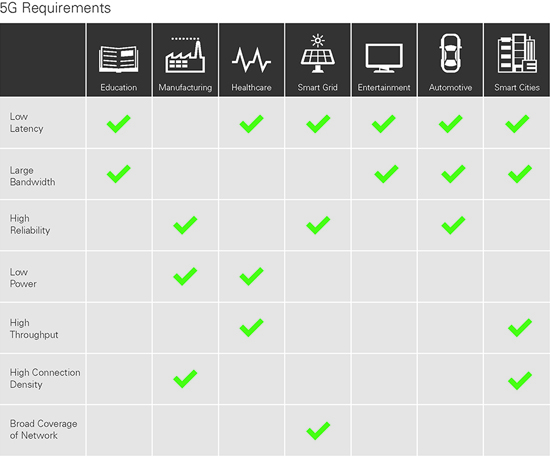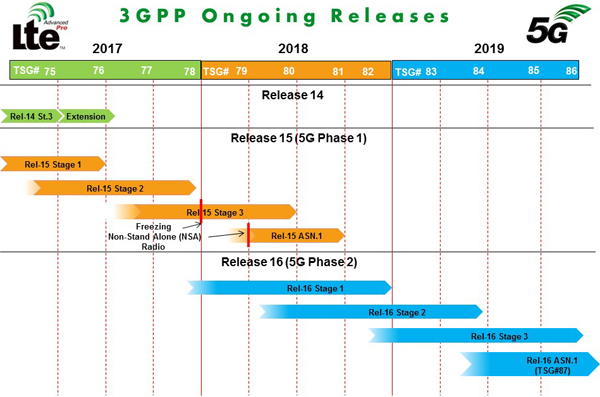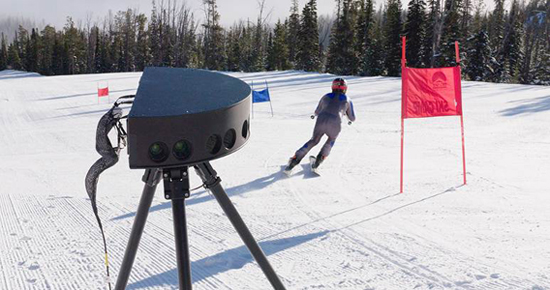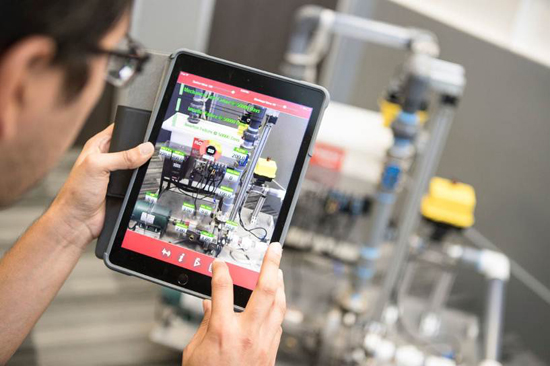December 2017 marks an important milestone for the next generation of wireless standards - the first half of the first phase of the 5G NR standard was approved by the 3GPP, and another milestone is coming soon, the second half of the first phase of the 5G NR Some will also be approved in June this year. As the standards are finalized, commercial equipment and infrastructure built around this release standard are undergoing field trials and pre-release testing. All of this means that 5G's commercial promotion is getting closer. At the Mobile World Congress in February, many companies demonstrated the high-speed and VR cool applications promised by 5G. The advancement of technology in the 2018 World Mobile Congress is impressive compared to 2017. One of the most impressive aspects of 5G is that it is not just a new mobile standard, but an ecosystem that spans a wide range of industries and applications around the standard. Instead, an ecosystem covering a wide range of industries and applications can be built around the standard.
Unlike previous standards, the 5G standard is intended to incorporate performance metrics to support applications outside of traditional mobile broadband scenarios. Of course, there are performance metrics for improving 5G enhanced mobile broadband, but there are additional performance metrics that specify the number of devices that can be connected to the network at the same time, as well as the target value of the delay. Increased device connectivity will help significantly expand the scale of the Internet of Things (IoT) and Industrial Internet of Things (IIoT) to the point where today's LTE capabilities are completely unattainable. The latency specification is for applications that require deterministic communication (such as any application involving human life) or applications where the technology will interact with humans in real time. While each of these three areas of specification can implement new and expanded application scenarios, combining these three areas can build a rich application ecosystem around 5G. The table below shows how different applications can take advantage of the different performance metrics of 5G.

Figure 1: 5G application and technology requirements
As mentioned above, the standard released by 3GPP in December is only the first version, and there will be more versions in the future. 5G will follow a design cycle similar to LTE. Over the past nine years, there have been multiple versions of the LET standard and several updates have been made. LTE was first proposed in 3GPP Rel-8. Currently, 3GPP is working hard to complete Rel-15. Rel-15 will be included in the 5G NR specification. In December 2017, the first version of the 3GPP 5G NSA (Non-Standalone, non-independent networking) standard was officially frozen. The full version of Rel-15 will be frozen in June 2018, including not only the 5G NR NSA, but also the SA (Stand Alone) standard. The NSA use case for 5G NR is very important because it will operate using the core network of LTE. This means that the operation of the 5G NR NSA does not require the introduction and installation of new infrastructure. The SA version will use the 5G core network and will likely need to install new network devices. In the next few months, researchers will work hard to finalize the 5G NR SA use case criteria, and once the standard is released, equipment vendors will need to design hardware that will support independent networking use cases.

Figure 2: 3GPP release schedule
For 5G, 2018 will be an exciting year. In addition to 3GPP Rel-15, there will be more early 5G deployments in the consumer market. At the Mobil World Congress, Huawei demonstrated a 5G base station, Samsung demonstrated its interoperability device test (IODT) based on 28 GHz 5G NR base station, and Qualcomm demonstrated IODT for its 28 GHz UE based on Ericsson and Nokia base stations. . These demonstrations show that the equipment vendor's hardware is almost ready to be deployed, and Qualcomm emphasizes on its website in bold that they are working to make 5G a commercial reality in 2019.
As 5G is gradually being widely used, a large number of new technologies and applications built around 5G will also begin to emerge. The unique provisions for delays and capacity in the 5G official specification have made applications that sounded a long way ago a few years away. Virtual reality (VR) is a good example. If you want to get a complete VR experience, there are some important factors to consider. First, users need a full 360-degree HD view to explore the virtual world. This means that the camera must capture HD video continuously 360 degrees, then transfer the video from the camera location back to the cellular base station and finally to the end user. Finally passed to the end user. Finally passed to the end user. The high data rate promised by 5G makes this task easy and delivers enough throughput for simultaneous delivery to multiple users. Another very important aspect of VR is latency. For example, someone opens the VR helmet and turns around, and the surrounding virtual environment also needs to complete the conversion within 1 millisecond. If the delay is greater than 1 millisecond, the human brain will perceive this delay and most people will experience severe nausea. Due to the improved mobile broadband speed of 5G and the delay specification of less than 1 millisecond, VR can be implemented over cellular networks.
Virtual reality has existed in some form for many years, but the ability to implement VR over cellular networks will make VR possible to apply in new areas. A popular application for VR is sports events. Imagine watching a football game from the perspective of a player on the field, or virtually watching the event on the 50th line of the course. A small-scale demonstration of this technology was made at the PyeongChang Olympics at the beginning of this year. 100 cameras are placed on the ice rink, and live data is transmitted back to a 5G technology exhibition hall in real time. People in the pavilion can wear VR headsets and experience skating activities like athletes on ice.

Figure 3: TrueVR system demonstrated by Intel Corporation at the 2018 Winter Olympics
The ability to connect up to 100 times more devices to the network will enable the Internet of Things (IoT) and Industrial Internet of Things (IIoT) to be realized. To some extent, the Internet of Things exists in the present, and there are more and more devices connected to the Internet. For consumers, these devices are varied, some are practical, some are purely fun, and some are very strange. But for the industry, IIoT offers many exciting new features and functions for smart factories. Every machine and equipment in a manufacturing plant is constantly reporting its health statistics and efficiencies, so aging equipment can be repaired before a failure occurs, completely avoiding problems. When IIoT is combined with augmented reality (AR), machine learning and artificial intelligence (AI), technicians will be able to view machine status and information via AR glasses or on-site tablets, and AI can help diagnose problems quickly. 5G will make it possible to achieve faster, more economical and safer manufacturing in the future.

Figure 4: The combination of IIoT and augmented reality will help build a smart factory
Autonomous vehicles may be one of the hottest and most anticipated applications that 5G will launch. Currently, autonomous driving of vehicles is achieved through the integration of numerous sensors, photos and video processing. Future autonomous vehicles still need to be equipped with numerous sensors and can handle data from sensors, but vehicle communication is indispensable for large-scale deployment of autonomous vehicles. In short, vehicles need a way to communicate with each other. Vehicle-to-vehicle communication will be used to share data about road and environmental conditions as well as route information, such as expected parking or left turn. In addition, the vehicle will also need to be able to communicate with a variety of different types of devices, such as cellular base stations, as well as other smart devices such as smart light poles or road signs, which can transmit road conditions or environmental data to passing vehicles. This research topic is called Car Link Everything, or V2X Communication. The 5G delay specification is critical to obtaining vehicle information. For example, due to too much information waiting to be processed in the communication link, the delay is too long, so that the car does not have time to brake when an obstacle occurs on the road, which may result in injury or death of the passenger. Therefore, V2X's ultra-reliable communication is essential. The massive data throughput provided by 5G will also play an important role in V2X. Cars at traffic lights can download and upload information about their current location from nearby base stations. This makes the car a collector of sensor data, but data processing can be handled at the base station or even in the cloud. As processing technology improves, updated information is pushed to the cellular infrastructure, and older cars can still take advantage of these updates without having to change their hardware.
Although the current version of the 3GPP specification does not include any specifications for V2X, 5G is an evolving standard, and the version released in December 2016 is only the first of many versions. The timeline in Figure 1 shows that Rel-16 will be released by the end of 2019, which represents the second phase of the 5G NR. The current Phase 2 research project includes an Integrated Access Backhaul (IAB) for centralized backhaul processing to address unlicensed spectrum sharing challenges in mobile communications, as well as V2X. 3GPP expects to address these and many other topics in Phase 2. Although 5G will launch commercial products in late 2018 and 2019, 5G research is still in progress.
With the consolidation of the 5G standard and the launch of 5G-enabled devices, we will increasingly feel the impact of 5G on the world, and it will become an integral part of everyday life, from entertainment to smart cities. To be sure, we are just beginning the prelude to the exciting new era of wireless technology.